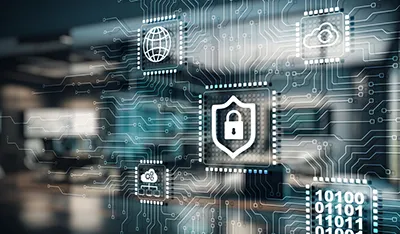Ideal Practices for Data Destruction to Strengthen Your Cyber Security Structure
Ideal Practices for Data Destruction to Strengthen Your Cyber Security Structure
Blog Article
The Importance of Effective Information Destruction Practices in Safeguarding Sensitive Info and Ensuring Computer Protection
In an era where data breaches are progressively usual, the relevance of effective data damage methods can not be overemphasized. Organizations face substantial threats when delicate information is inadequately taken care of, possibly resulting in unauthorized gain access to and extreme economic effects. Applying durable information destruction techniques not only minimizes these threats however likewise lines up with lawful conformity needs, ensuring that organizations promote their reputation and foster client depend on. Nonetheless, the question remains: what details techniques can be employed to enhance these practices, and exactly how can companies properly integrate them into their general cybersecurity framework?
Comprehending Data Destruction
Understanding information destruction is essential in today's digital landscape, where delicate information can quickly be compromised. Reliable data devastation includes not just ensuring however deleting data that data is irretrievable with comprehensive techniques. This procedure is necessary for organizations that manage confidential client details, intellectual residential or commercial property, or interior documents, as any violation can bring about serious economic and reputational consequences.
Information destruction includes numerous techniques, including shredding physical media, degaussing magnetic storage space tools, and utilizing software-based remedies that overwrite data numerous times. Each approach offers a particular function and has to straighten with the sensitivity of the information being taken care of. Physical devastation is often chosen for tough drives including extremely personal information, while software program techniques might be adequate for much less delicate details.
Additionally, sticking to market standards and regulations, such as the General Information Defense Guideline (GDPR) or the Health And Wellness Insurance Coverage Mobility and Accountability Act (HIPAA), is vital for compliance and to mitigate lawful threats. Organizations needs to establish a robust information devastation policy, train employees on best techniques, and consistently examine their treatments to make certain that all delicate info is thrown away safely and efficiently.
Risks of Inadequate Practices
Inadequate information devastation techniques reveal companies to considerable risks that can have far-reaching repercussions. When delicate info is not correctly gotten rid of, it stays prone to unauthorized accessibility, which can bring about information violations and identity burglary. Such occurrences not only endanger the protection of individuals but additionally taint the organization's credibility, leading to a loss of customer trust and potential economic repercussions.
In addition, regulatory conformity is progressively stringent in lots of industries. Failing to comply with information damage regulations can cause hefty penalties and lawsuits against companies. These charges can draw away and strain economic sources interest from core company procedures.
Furthermore, the misuse of recurring data can bring about intellectual home theft or business reconnaissance, threatening affordable advantages (data destruction). The influence of insufficient data damage expands beyond immediate economic losses; it can likewise result in long-lasting damages to brand honesty and market placement

Organizations should recognize that information protection is not entirely about avoiding violations; it also includes the liable management of information throughout its lifecycle. Ignoring effective information devastation protocols can have tragic implications, highlighting the need for robust actions to alleviate these risks.
Finest Practices for Information Damage
Applying efficient data devastation techniques is crucial for securing sensitive info and preserving compliance with governing standards. Organizations ought to embrace a multi-faceted strategy to make certain that data is irretrievable, thereby avoiding unauthorized access and possible violations.
First, information ought to be categorized based on sensitivity, permitting companies to apply appropriate devastation approaches customized to use this link the degree of danger. For electronic data, making use of software-based data-wiping devices that abide by market standards can efficiently overwrite existing data. Physical damage techniques, such as shredding or degaussing, are essential for devices that keep delicate info, making sure full eradication.
Establishing a clear information retention policy is vital, detailing how much time different kinds of details ought to be maintained prior to devastation. Routine audits of data storage systems are likewise essential to recognize unneeded or out-of-date data needing removal.
Furthermore, training workers on the value of information destruction and the particular methods to comply with fosters a society of safety within the organization. Ultimately, preserving documents of data devastation processes offers liability and sustains conformity with interior plans and exterior regulations. By adhering to these finest methods, organizations can dramatically reduce the dangers connected with information exposure.
Legal and Conformity Considerations

Failure to abide by these laws can result in extreme fines, including considerable penalties and reputational damage. Organizations has to apply a durable information damage policy that aligns with these legal structures and provides clear guidelines on the proper techniques of information disposal, whether physical shredding or digital cleaning.
Additionally, keeping paperwork of information destruction tasks is vital for showing compliance during audits or examinations. By focusing on lawful and conformity considerations, organizations can boost their information safety and security stance and foster count on with customers and stakeholders, ultimately contributing to an extra protected data administration atmosphere.
Benefits of Effective Information Destruction
Effective information destruction techniques expand past plain compliance; they use significant advantages to organizations that prioritize them. By making sure that sensitive information is irretrievably damaged, organizations reduce the risk of information violations and the possible financial consequences connected with them. This positive method not only safeguards versus unauthorized access yet also improves the general trustworthiness of the organization in the eyes of clients and stakeholders.
Carrying out robust information damage methods, such as physical destruction of storage gadgets or advanced data wiping methods, contributes to the conditioning of a company's cybersecurity pose. data destruction. It minimizes the chance of intellectual building burglary and secures proprietary information, therefore keeping a competitive edge out there

Final Thought
In final thought, reliable information devastation methods are necessary for securing delicate information and boosting overall computer protection. By carrying out thorough methods such as software, shredding, and degaussing overwriting, companies can mitigate the risks linked with unapproved access and data violations. Adherence to regulative standards, consisting of GDPR and HIPAA, further enhances conformity and shields versus legal repercussions. Eventually, a dedication to durable data devastation approaches click over here now promotes a culture of duty, therefore enhancing a company's cybersecurity stance and preserving client depend on.

Report this page